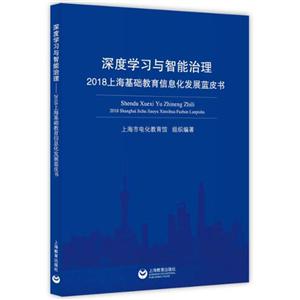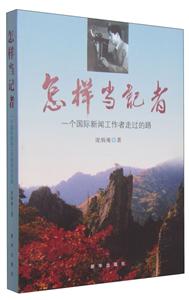全球气候变化中的紫外线辐射-观测.模拟及其对生态系统的影响

|
全球气候变化中的紫外线辐射-观测.模拟及其对生态系统的影响作者:高炜.(美)施默尔特(Schmoldt. 开 本:16开 书号ISBN:9787302203605 定价:158.0 出版时间:2009-11-01 出版社:清华大学出版社 |
全球气候变化中的紫外线辐射-观测.模拟及其对生态系统的影响 本书特色
《全球气候变化中的紫外线辐射:观测、模拟及其对生态系统的影响》由清华大学出版社出版。
全球气候变化中的紫外线辐射-观测.模拟及其对生态系统的影响 目录
List of Contributors1 A Climatology of UV Radiation, 1979- 2000, 65S - 65N1.1 Introduction1.2 Method1.3 Results1.3.1 Satellite-Derived UV Climatologies1.3.2 Comparison with Ground-Based Measurements1.3.3 Discussion of Uncertanties1.4 ConclusionsAcknowledgementsReferences2 Balancing the Risks and Benefits of Ultraviolet Radiation2.1 Introduction2.2 Long Term Changes in UVEry2.3 Geographical Variability in UVEry2.4 Peak UV2.4.1 Peak UV Index2.4.2 Peak UV Daily Dose2.5 Comparing Weighting Functions for Erythema and Vitamin D2.6 Seasonal and Diurnal Variation of UVE~y and UVvitD2.7 Global Climatologies of UVE~y and UVvitD2.8 Relationship Between UVvitD and UVEry2.9 Production of Vitamin D from Sunlight2.10 Calculation of Optimal Times for Exposure to Sunlight2.11 An Inconsistency2.12 ConclusionsAcknowledgementsReferences3 Climatology of Ultraviolet Radiation at High Latitudes Derived from Measurements of the National Science Foundation's Ultraviolet Spec-tral Irradiance Monitoring Network3.1 Introduction3.2 Data Analysis3.2.1 Data3.2.2 Establishment of Climatologies3.2.3 Estimates of Historical UV Indices3.3 UV Index Climatology3.3.1 South Pole3.3.2 McMurdo Station3.3.3 Palmer Station3.3.4 Ushuaia3.3.5 San Diego3.3.6 Barrow3.4 Climatology ofUV-A Irradiance3.5 Comparison of Radiation Levels at Network Sites3.6 Conclusions and OutlookAcknowledgementsReferences4 UV Solar Radiation in Polar Regions: Consequences for the Environment and Human Health4.1 Introduction4.2 Networks and Databanks4.3 Impact of Solar UV on the Environment4.3.1 Effect of the Environment on Solar UV4.4 Impact of Solar UV on Human Health4.4.1 Information and Protection Programs4.4.2 Dosimetry, UV Modeling, and Instruments4.5 Concluding RemarksReferences5 Changes in Ultraviolet and Visible Solar Irradiance 1979 to 20085.1 Introduction5.2 Instrumentation5.3 Detection of Long-Term Change5.3.1 Radiation Amplification Factor5.3.2 Different Definitions of RAF5.3.3 Estimating UV Trends: Discussion5.3.4 Reduction ofUV Irradiance by Clouds and Aerosols5.3.5 Stokes Derivation of Cr=(1-R)/(1-Rc)5.3.6 UV Absorption5.3.7 Estimating Zonal Average UV Change5.3.8 Estimating UV Trends: Satellites5.3.9 Estimating UV Trends: Ground-Based5.4 UV in the Polar Regions5.5 Human Exposure to UV5.6 UV Index and Units5.7 Action Spectra and Irradiance Trends5.8 UV SummaryAppendix 5.1 Calculating RAF(0 )AcknowledgementsReferences6 The Brewer Spectrophotometer6.1 Introduction6.2 History6.3 The Instrument6.3. I The Fore-Optics6.3.2 The Spectrometer6.3.3 The Photomultiplier Housing6.3.4 Support Electronics6.3.5 The Control Computer6.4 Corrections Applied to Data6.4.1 Dark Count6.4.2 Dead Time6.4.3 Stray Light6.4.4 Temperature Response6.4.5 Neutral Density Filters6.4.6 Cosine Response6.4.7 Intemal Polarization6.5 Measurement of Total Ozone6.5.1 Measurement Technique6.5.2 Calibration6.6 Measurement of Spectral UV Radiation6.7 Measurement of Other Atmospheric Variables6.7.1 Vertical Profile of Ozone6.7.2 Atmospheric SO26.7.3 Atmospheric NOz6.7.4 Aerosol Optical Depth6.7.5 Effective Temperature of Atmospheric Ozone6.8 The Brewer Spectrophotometer as a Powerful Research Tool6.9 SummaryAcknowledgementsReferences7 Techniques for Solar Dosimetry in Different Environments7.1 Introduction7.2 UV Dosimetry and Minimization Strategies7.3 Miniaturization of Polysulphone Dosimeters7.4 Measurements on Plants7.5 Long-Term UV Dosimeters7.6 Vitamin D Effective UV Dosimetry7.7 Discussion and ConclusionsReferences8 An Ultraviolet Radiation Monitoring and Research Program for Agriculture8.1 Introduction8.2 Introduction to the USDA UVMRP (Purpose and History)8.3 Monitoring Network8.3.1 Sites and Coverage8.3.2 Data Products Provided by UVMRP8.4 Data Collection and Processing8.4.1 UV-MFRSR Data Processing8.4.2 Erythemally Weighted UV Irradiance8.4.3 Langley Analysis8.4.4 Data Processing for Other Measurements8.5 Derived Products8.5.1 Optical Depth8.5.2 Daily Column Ozone8.5.3 Synthetic Spectrum Data8.6 Database Design a
自然科学 地球科学 大气科学(气象学)
在线阅读
- 最新内容
- 相关内容
- 网友推荐
- 图文推荐
零零教育社区:论坛热帖子
| [高考] 2022 西安电子科技大学《软件工程》大作业答案 (2022-04-25) |
| [家长教育] 孩子为什么会和父母感情疏离? (2019-07-14) |
| [教师分享] 给远方姐姐的一封信 (2018-11-07) |
| [教师分享] 伸缩门 (2018-11-07) |
| [教师分享] 回家乡 (2018-11-07) |
| [教师分享] 是风味也是人间 (2018-11-07) |
| [教师分享] 一句格言的启示 (2018-11-07) |
| [教师分享] 无规矩不成方圆 (2018-11-07) |
| [教师分享] 第十届全国教育名家论坛有感(二) (2018-11-07) |
| [教师分享] 贪玩的小狗 (2018-11-07) |






